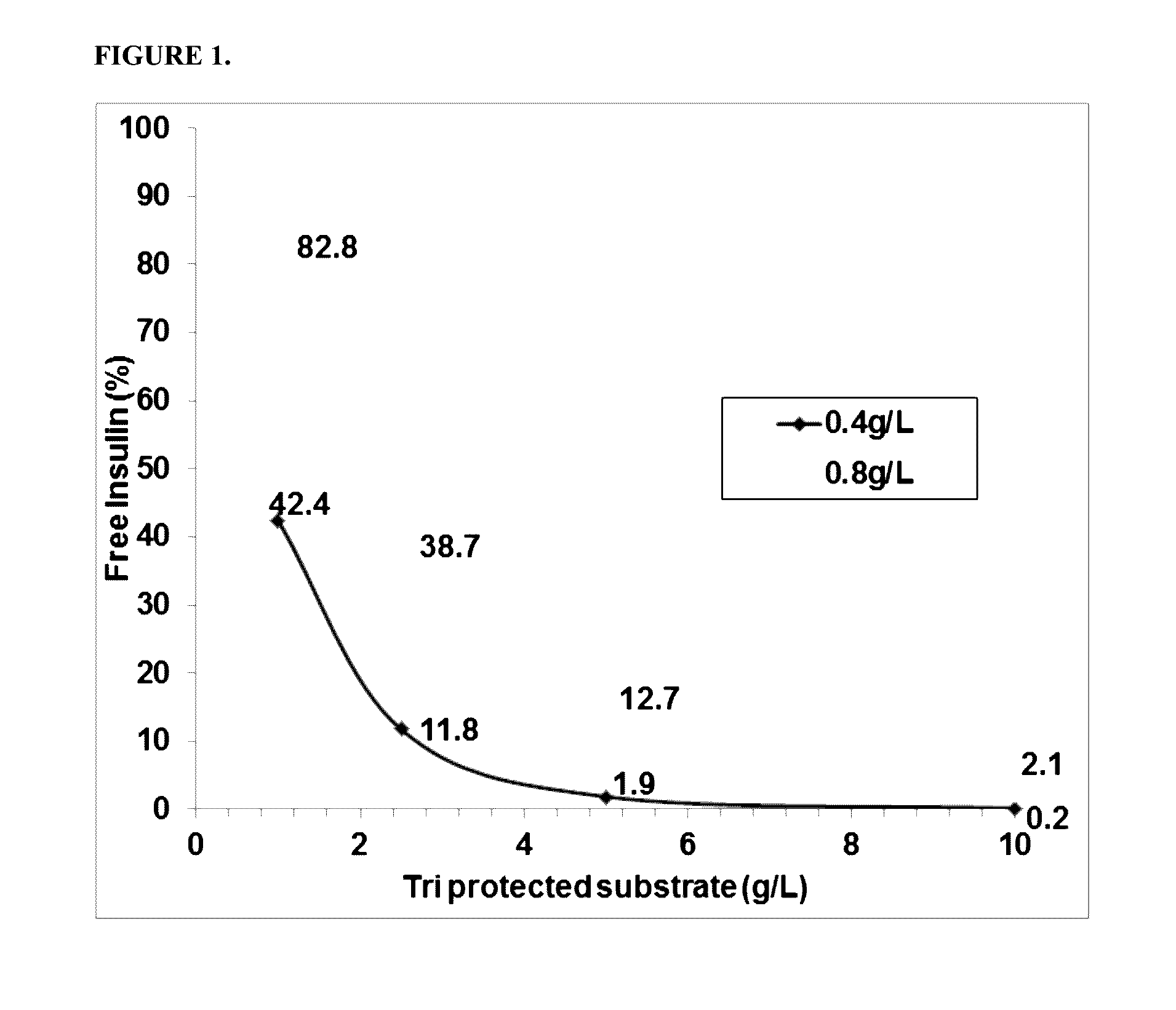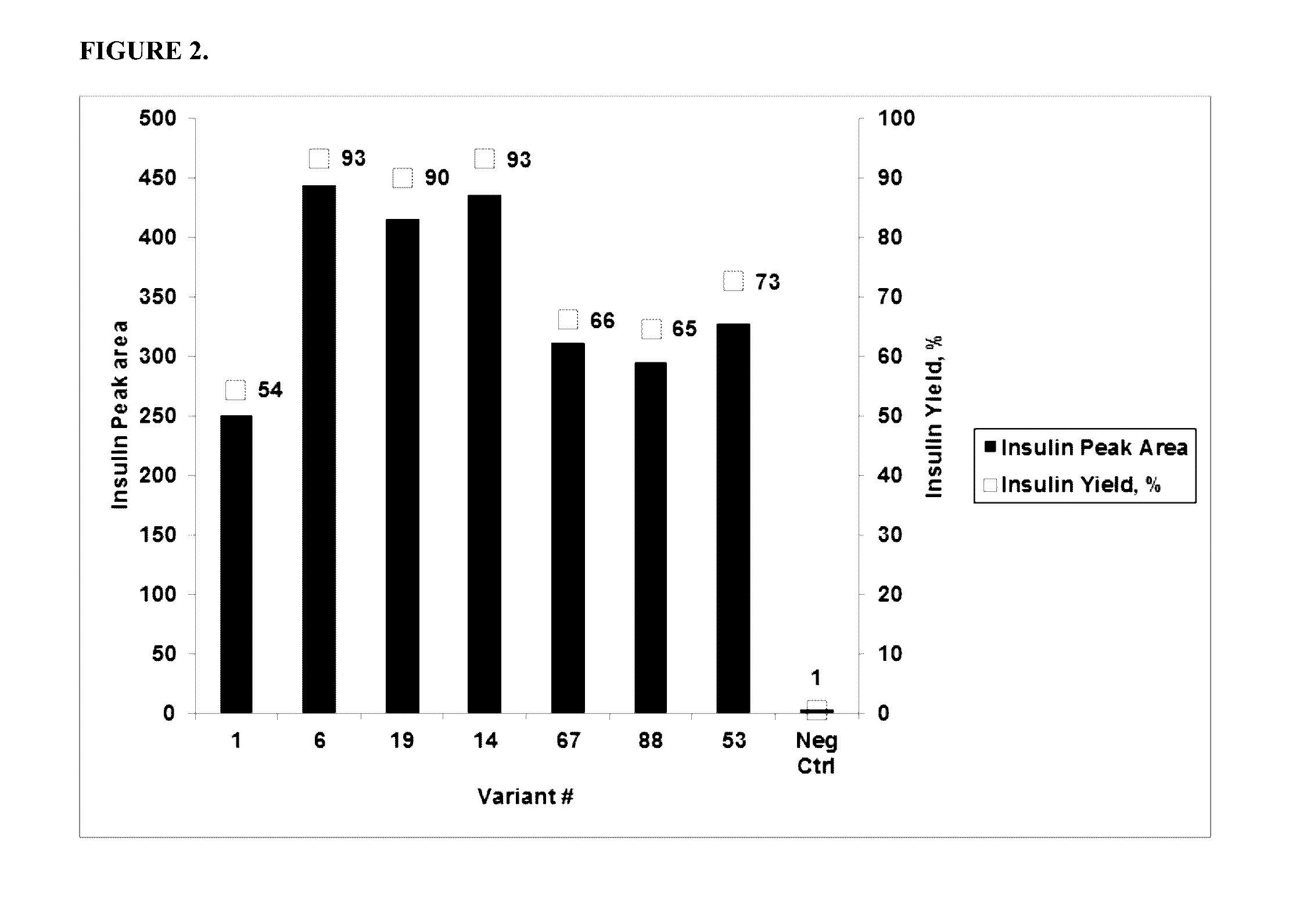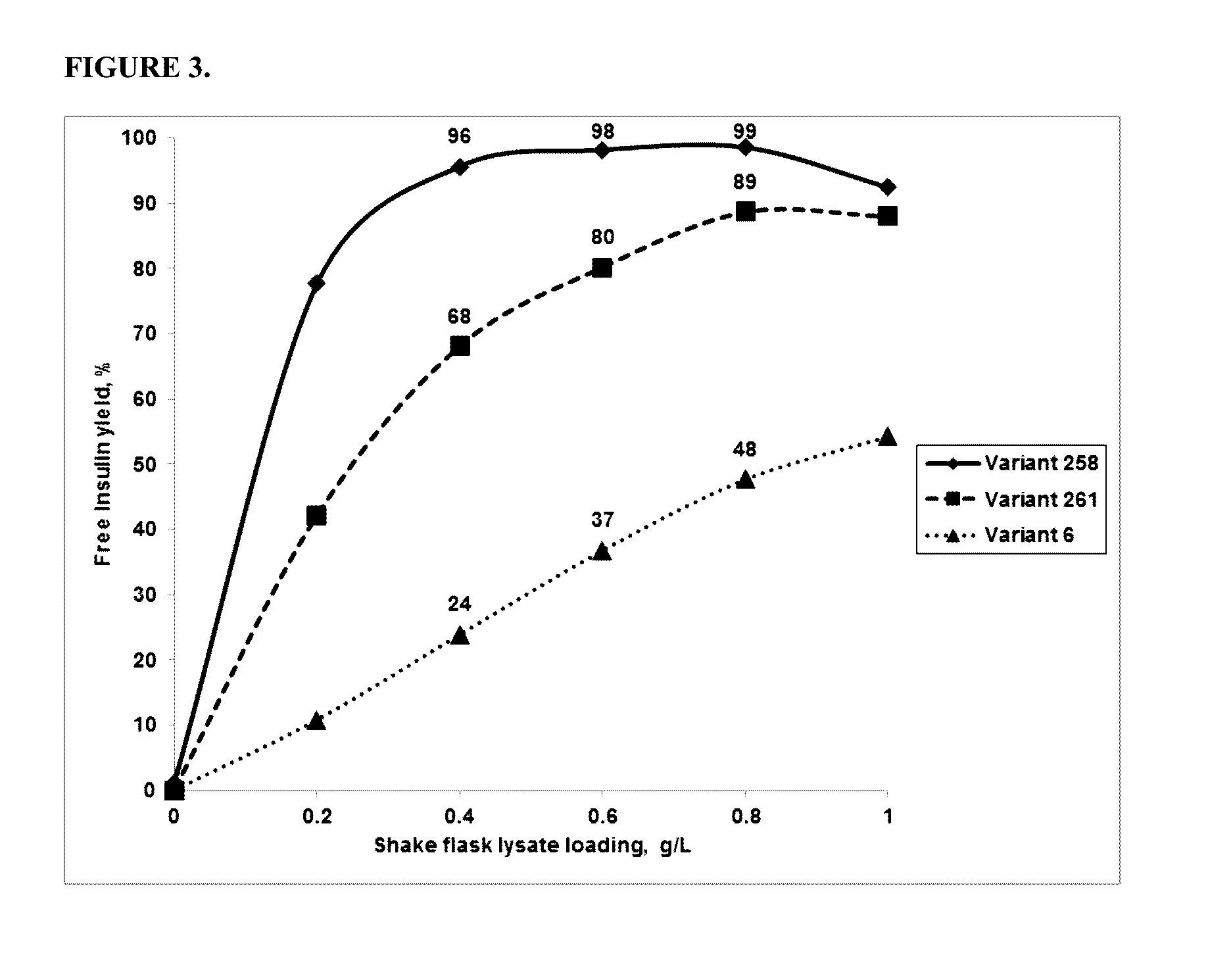Penicillin-g acylases
a technology of acylase and penicillin, which is applied in the field of engineering penicillin g acylase (pga) enzymes, polynucleotides encoding the, can solve the problems of natural occurring pga enzymes showing instability in commercial processes, reducing activity and/or selectivity, and compromising enzyme properties
- Summary
- Abstract
- Description
- Claims
- Application Information
AI Technical Summary
Benefits of technology
Problems solved by technology
Method used
Image
Examples
example 1
E. coli Expression Hosts Containing Recombinant PGA Genes
[0163]The initial PGA enzymes used to produce the variants of the present invention were obtained from the Codex® Acylase Panel (Codexis). The PGA panel plate comprises a collection of engineered PGA polypeptides that have improved properties, as compared to the wild-type Kluyvera citrophila PGA. The wild type PGA gene is a heterodimer consisting of alpha subunit (23.8 KDa) and beta subunit (62.2 KDa) linked by 54aa spacer region. Due to the presence of spacer region, an autoprocessing step is required to form the active protein. The wild-type gene was modified to eliminate the spacer region thus eliminating the auto processing step. The Codex® Acylase Panel (Codexis) contains PGA variants that lack the spacer region (See e.g., US Pat. Appln. Publn. 2010 / 0143968 A1). The PGA-encoding genes were cloned into the expression vector pCK110900 (See, FIG. 3 of US Pat. Appln. Publn. No. 2006 / 0195947) operatively linked to the lac prom...
example 2
Preparation of HTP PGA-Containing Wet Cell Pellets
[0164]E. coli cells containing recombinant PGA-encoding genes from monoclonal colonies were inoculated into 180 μl LB containing 1% glucose and 30 μg / mL chloramphenicol in the wells of 96 well shallow well microtiter plates. The cultures were grown overnight at 30° C., 200 rpm and 85% humidity. Then, 10 μl of each of the cell cultures were transferred into the wells of 96 well deep well plates containing 390 mL TB and 30 μg / mL CAM. The deep-well plates were incubated for 3 hours (OD600 0.6-0.8) at 30° C., 250 rpm and 85% humidity. The cell cultures were then induced by IPTG to a final concentration of 1 mM and incubated overnight under the same conditions as originally used. The cells were then pelleted using centrifugation at 4000 rpm for 10 min. The supernatants were discarded and the pellets frozen at −80° C. prior to lysis.
example 3
Preparation and Analysis of HTP PGA-Containing Cell Lysates
[0165]First, 250 μl lysis buffer containing 20 mM Tris-HCl buffer, pH 7.5, 1 mg / mL lysozyme, and 0.5 mg / mL PMBS was added to the cell paste in each well produced as described in Example 2. The cells were lysed at room temperature for 2 hours with shaking on a bench top shaker. The plate was then centrifuged for 15 min at 4000 rpm and 4° C. The clear supernatants used in biocatalytic reactions to determine their activity levels.
[0166]The activity of the PGA variants was evaluated based on the efficiency of the variant in removing the three phenyl acetate groups chemically attached to the A1 (glycine), B1 (phenylalanine), and B29 (Lysine) residues of insulin. HTP reactions were carried out in 96 well deep well plates. First, 0.3 ml of the reaction mixture contained 0.1M Tris-HCl, pH 8.0, 5 g / L tri-protected insulin and HTP lysate between 25-125 μl (depending on the linear curve). The HTP plates were incubated in thermotrons (3...
PUM
| Property | Measurement | Unit |
|---|---|---|
| Fraction | aaaaa | aaaaa |
| Fraction | aaaaa | aaaaa |
| Fraction | aaaaa | aaaaa |
Abstract
Description
Claims
Application Information
 Login to View More
Login to View More - R&D
- Intellectual Property
- Life Sciences
- Materials
- Tech Scout
- Unparalleled Data Quality
- Higher Quality Content
- 60% Fewer Hallucinations
Browse by: Latest US Patents, China's latest patents, Technical Efficacy Thesaurus, Application Domain, Technology Topic, Popular Technical Reports.
© 2025 PatSnap. All rights reserved.Legal|Privacy policy|Modern Slavery Act Transparency Statement|Sitemap|About US| Contact US: help@patsnap.com



